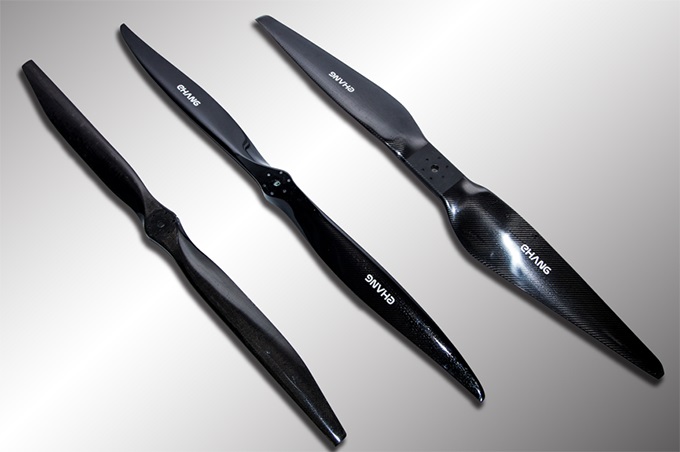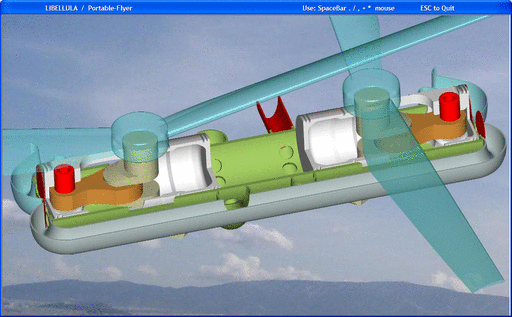Hello Tommy Cookers.
You write:
- “ if the tetrahedron-linkage PP is compliant in coning it is also compliant to flapping
coning being the blade angle displacement in common and flapping being the difference in blade angle displacement
What I wrote is:
“Suppose the “tetrahedron” leaves free the blades to make as much “coning” as they like.”
The “tetrahedron” holds the blade restricting the “coning”.
But even if the tetrahedron allows coning, it doesn’t mean it allows the flapping, too. It depends on the way the blade is supported.
You write:
- “regarding octocopters eg EHang - don't they maintain a large vertical thrust vector by having only a small horizontal one ?
so there's less need for VP (given that electric drive is better than ICE eg in trading rpm for torque etc)
my guess is that they already have a VP repertoire available via the structural properties of the props
these might even include changes in blade twist”
From their designs, it doesn’t seem they have “variable pitch via structural properties of the propeller”.
Quote from
https://www.ehang.com/news/225.html
“As for a multi-rotor aircraft,
the propeller is the most important power driver, which affects the aircraft dynamic performance, flight stability, noise and many other core indicators.
We have designed and upgraded three versions of the EHang 184 propeller. The first-generation propeller mainly meets the requirement of flight test in early flight. In the second generation, its performance is further improved that the limit drag of the single propeller reached 87kg, meeting the need of EHang 184 flight in a variety of environments. The third-generation propeller design not only improved the aerodynamic efficiency for 10%-15%, but also reduced the noise generated by rotation.

In order to conduct testing more technically and accurately, we designed and developed two kinds of testbed, separately used for the propellers testing and the power system components testing. The propellers testbed mounted with high-power motors up to 27 kilowatts, enable to test as huge as 100-kilograms limit drag of the propellers. Meanwhile, we also designed and developed the host computer system for the testbed, which is able to collect specific data of EHang 184 propellers and then conduct spectrum analysis and algorithm processing to these original data, so as to detect where the vibrational coupling concentrates."
End of Quote
With PatPitch propellers and two modes of operation:
a take-off / hovering mode wherein the electric motors rev at lower rpm and the propellers run at a lower pitch,
and
a cruise mode wherein the electric motors revs at higher revs forcing a larger propeller pitch,
the range, the flight duration and the maximum cruise speed of the e-Hang would increase.
Thanks
Manolis Pattakos


